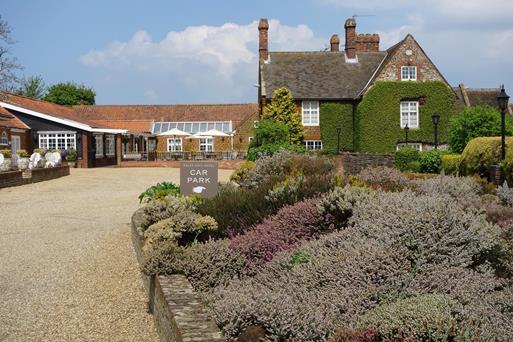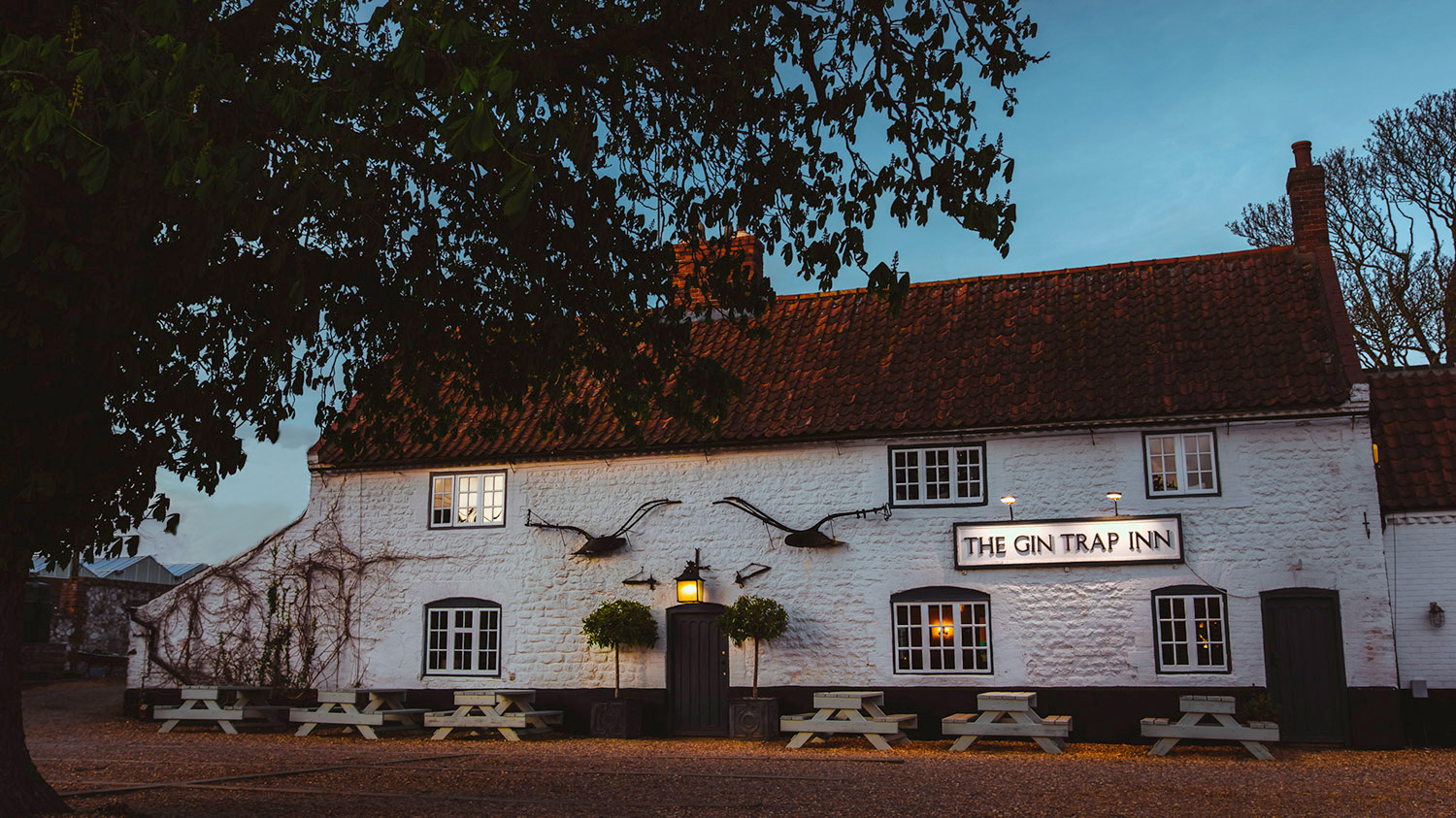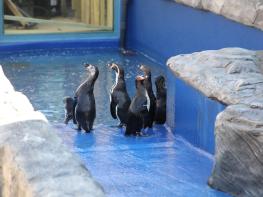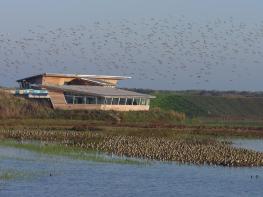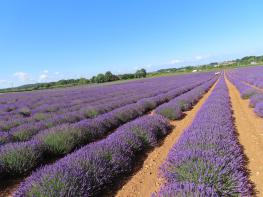Brook Bungalow is a large secluded well-appointed holiday home in a delightful north Norfolk…
Holme next the Sea and Thornham

Discover a great walk by the dunes and the world-famous wood henge.
7.5 miles (12.1kms)
About the walk
In 1999, Holme next the Sea hit the headlines when archaeologists decided to excavate a wooden henge that had been revealed beneath shifting sands just off the coast. A roughly circular enclosure some 22ft (6.7m) in diameter, it comprised 55 closely placed split posts surrounding the upturned stump of a massive oak, whose spreading roots created a platform raised to the sky. Accurately dated to 2049BC at the beginning of the Bronze Age, it is thought to have been used for the ceremonial laying out of a body after death, so that the bones could be picked clean by birds before burial. Now preserved, the timbers are displayed at Lynn Museum in King's Lynn.
A bird watcher's paradise
Although there is nothing left to see of the henge on the sands, there is a great beach and the dunes, pools, reed beds and salt marshes behind form one of the best bird-watching sites along the coast. The eastern corner is managed by the Norfolk Ornithologists' Association, who undertake ringing and an ongoing census of the birds passing through during the year. A little further on, towards the end of the walk is the adjacent Holme Dunes NWT reserve, where there is a visitor centre and several hides.
Over 320 species have been recorded as resident or visiting, but what you might see is dependent upon the time of year, weather and tide. Easily recognised is the graceful avocet, which has long legs, a distinctive white and black plumage and a long, upcurled beak that it uses for probing the mud. As the afternoon segues into evening, you might spot a barn owl quartering the marshes in search of a meal. Seabirds to look out for include terns, divers and skuas as well as several kinds of sea ducks.
Extensive dunes
The dunes support a range of plants, but without the tufts of spiky marram grass, would not exist in the first place. The tough leaves prevent it from drying out, while the penetrating roots form a dense mass that keeps the sand together. The buckthorn scrub is thought to have been planted to help further stabilise the dunes and its distinctive orange autumn berries are a valuable food for migrating birds. Scrapes of water provide breeding sites for one of the country's rarer amphibians, the natterjack toad. Its sandy colour and warty skin is good camouflage against the dune background, but you might spot them out and about during spring and summer.
The Norfolk coast was heavily defended during the Second World War and several bunkers remain, half buried in the sand. The dunes also served as a training ground and a railway was built to provide a moving target for artillery practice.
Walk directions
Out of the car park, head back along the lane from the coast. Turn left along Westgate through Holme next the Sea. Keep ahead past the White Horse and the church before the lane swings right to the main road.
Cross to Chalkpit Lane opposite, which, beyond a couple of cottages, gently climbs the hill beyond. At the top, turn left at a T-junction along Green Bank, a broad track that follows the edge of the high ground looking out to the coast.
Emerging onto the bend of a lane, keep ahead, soon passing a junction beside which is a trig column. Continue for another 0.5 mile (800m) to the end and turn left, dropping back to the main road at Thornham. Go right through the village to The Orange Tree.
Turn left past the church and keep ahead at the next junction to the edge of the village. Where the lane then bends right, go left along a narrowing track signed to Holme. As that then swings right, leave over a bridge on the left to follow a winding path at the edge of the coastal reed beds. Emerging onto a rough track, Staithe Lane, turn right. A short distance along, climb onto the left embankment. Pass through a gate and continue along the raised path that winds towards the sea above the salt marshes. Reaching the dunes, it curves left above the freshwater pool of Broad Water, passing the entrance to a bird hide. Drop right down steps and swing left through a pine wood. Towards the far side of the trees, a path off left leads to the Holme Dunes NWT Visitor Centre.
The ongoing route, however, continues ahead through the dunes. Eventually reaching a fork by the corner of a golf course, bear right, dropping to the edge of the salt marsh. Carry on to the next junction, where a sign directs the Peddars Way inland. Exercise care crossing the golf course and follow the lane beyond back to the car park.
Additional information
<p>Footpaths and tracks, some quiet lanes</p>
<p>Saltmarsh and farmland</p>
<p>On lead in nature reserve, note dogs not allowed on all beaches</p>
AA Walker's Map 21 North Norfolk Coast
<p>Coastal car park (charge) at Holme next the Sea</p>
<p>Opposite car park</p>
WALKING IN SAFETY
Read our tips to look after yourself and the environment when following this walk.
Find out more
Also in the area
About the area
Discover Norfolk
The North Norfolk Coast is designated an Area of Outstanding Natural Beauty and probably the finest of its kind in Europe. Here you’ll find a string of quaint villages and small towns – Holkham, Wells-next-the-Sea and Cley next the Sea are 21st-century favourites, while Sheringham and Cromer are classic examples of a good old-fashioned seaside resort where grand Victorian hotels look out to sea. Further round the coast you'll find Great Yarmouth, one of the most popular resorts in the UK and packed full of amusements, shops and seashore entertainment. And let's not forget Norwich, the region's only city.
Norfolk prides itself on its wealth of historic houses, the most famous being Sandringham, where Her Majesty the Queen and her family spend Christmas. Many of Norfolk’s towns have a particular charm and a strong sense of community. The quiet market towns of Fakenham and Swaffham are prime examples, as well as Thetford, with its popular museum focusing on the TV comedy series Dad’s Army which was filmed in the area.
Nearby stays
Restaurants and Pubs
Nearby experiences
Recommended things to do
Why choose Rated Trips?
Your trusted guide to rated places across the UK
The best coverage
Discover more than 15,000 professionally rated places to stay, eat and visit from across the UK and Ireland.
Quality assured
Choose a place to stay safe in the knowledge that it has been expertly assessed by trained assessors.
Plan your next trip
Search by location or the type of place you're visiting to find your next ideal holiday experience.
Travel inspiration
Read our articles, city guides and recommended things to do for inspiration. We're here to help you explore the UK.

